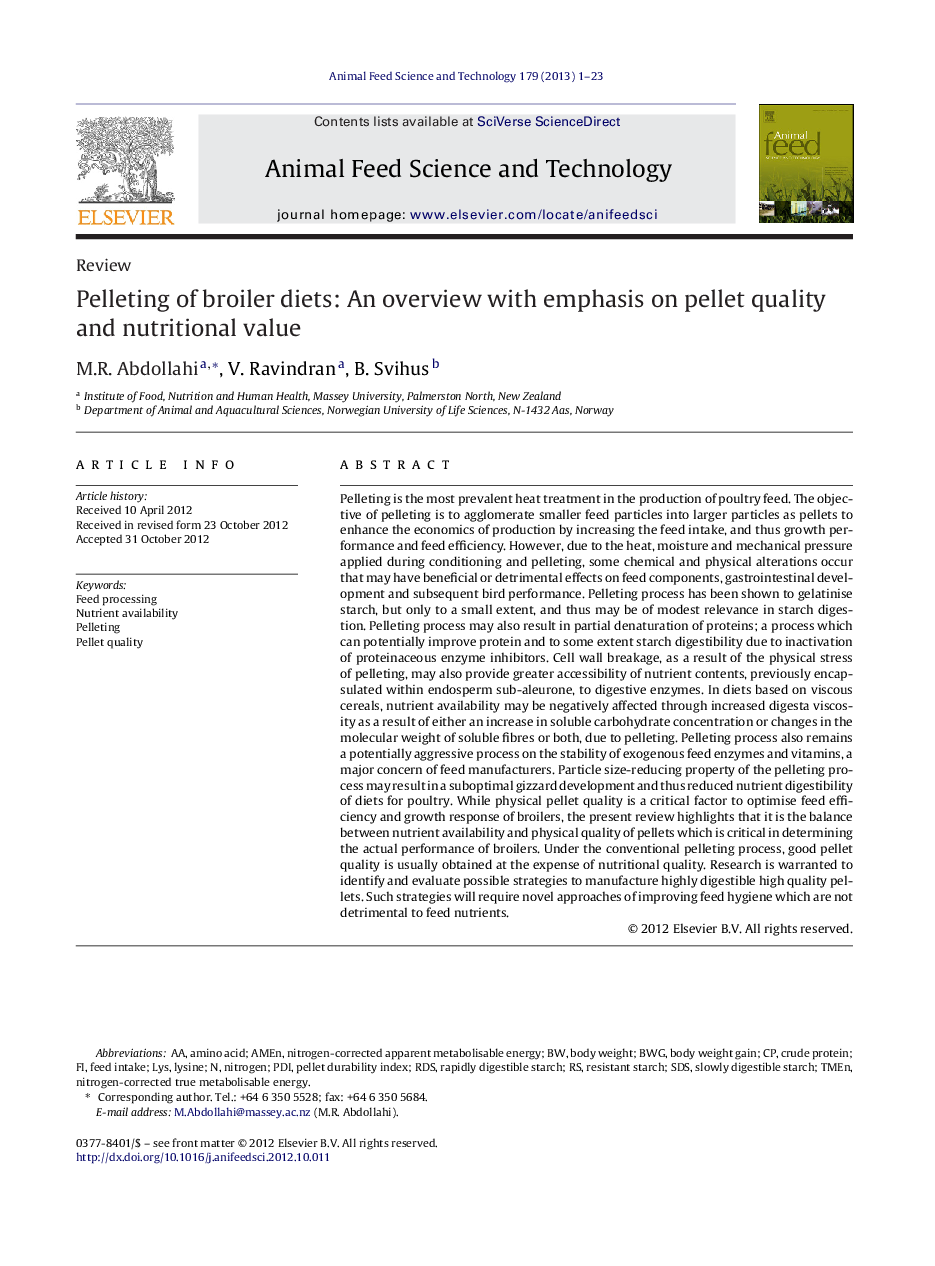| کد مقاله | کد نشریه | سال انتشار | مقاله انگلیسی | نسخه تمام متن |
|---|---|---|---|---|
| 2419765 | 1552409 | 2013 | 23 صفحه PDF | دانلود رایگان |

Pelleting is the most prevalent heat treatment in the production of poultry feed. The objective of pelleting is to agglomerate smaller feed particles into larger particles as pellets to enhance the economics of production by increasing the feed intake, and thus growth performance and feed efficiency. However, due to the heat, moisture and mechanical pressure applied during conditioning and pelleting, some chemical and physical alterations occur that may have beneficial or detrimental effects on feed components, gastrointestinal development and subsequent bird performance. Pelleting process has been shown to gelatinise starch, but only to a small extent, and thus may be of modest relevance in starch digestion. Pelleting process may also result in partial denaturation of proteins; a process which can potentially improve protein and to some extent starch digestibility due to inactivation of proteinaceous enzyme inhibitors. Cell wall breakage, as a result of the physical stress of pelleting, may also provide greater accessibility of nutrient contents, previously encapsulated within endosperm sub-aleurone, to digestive enzymes. In diets based on viscous cereals, nutrient availability may be negatively affected through increased digesta viscosity as a result of either an increase in soluble carbohydrate concentration or changes in the molecular weight of soluble fibres or both, due to pelleting. Pelleting process also remains a potentially aggressive process on the stability of exogenous feed enzymes and vitamins, a major concern of feed manufacturers. Particle size-reducing property of the pelleting process may result in a suboptimal gizzard development and thus reduced nutrient digestibility of diets for poultry. While physical pellet quality is a critical factor to optimise feed efficiency and growth response of broilers, the present review highlights that it is the balance between nutrient availability and physical quality of pellets which is critical in determining the actual performance of broilers. Under the conventional pelleting process, good pellet quality is usually obtained at the expense of nutritional quality. Research is warranted to identify and evaluate possible strategies to manufacture highly digestible high quality pellets. Such strategies will require novel approaches of improving feed hygiene which are not detrimental to feed nutrients.
Journal: Animal Feed Science and Technology - Volume 179, Issues 1–4, 31 January 2013, Pages 1–23